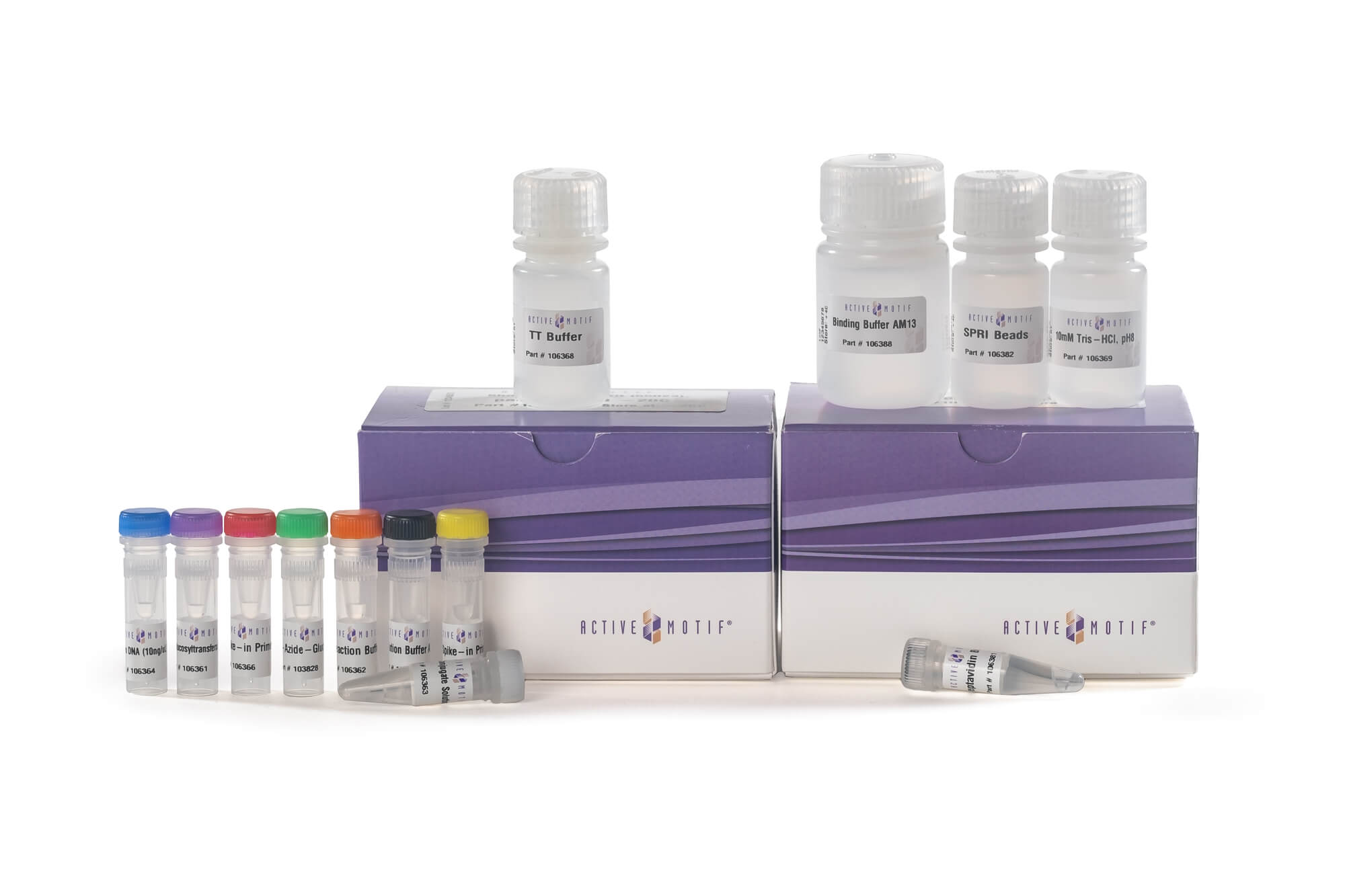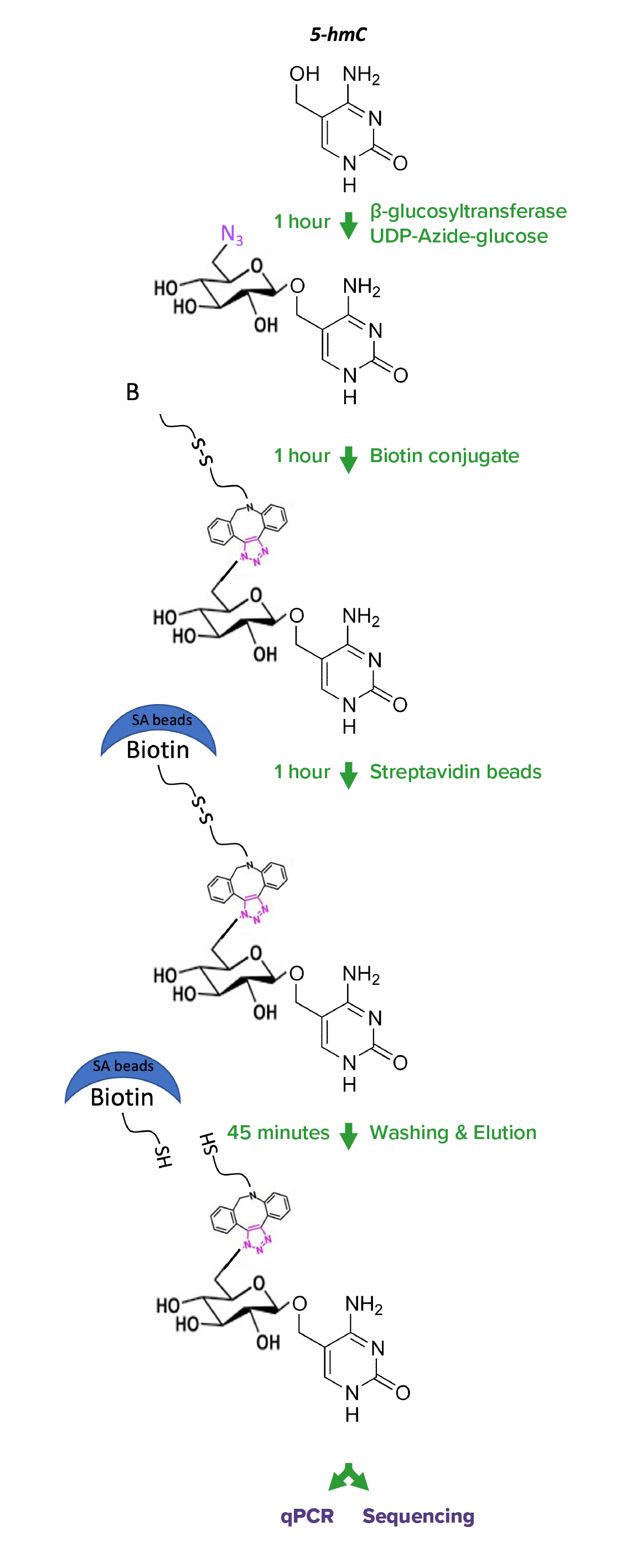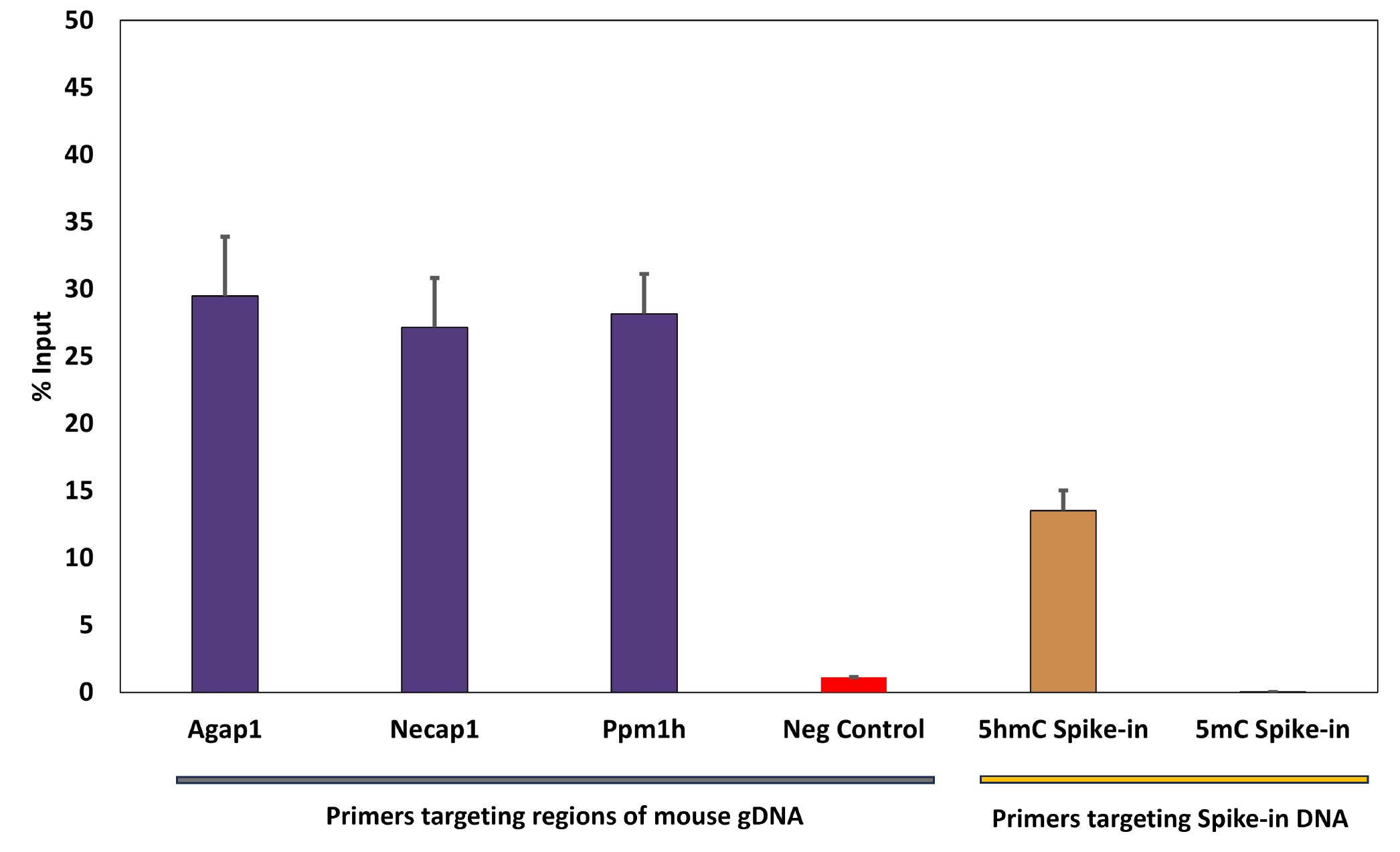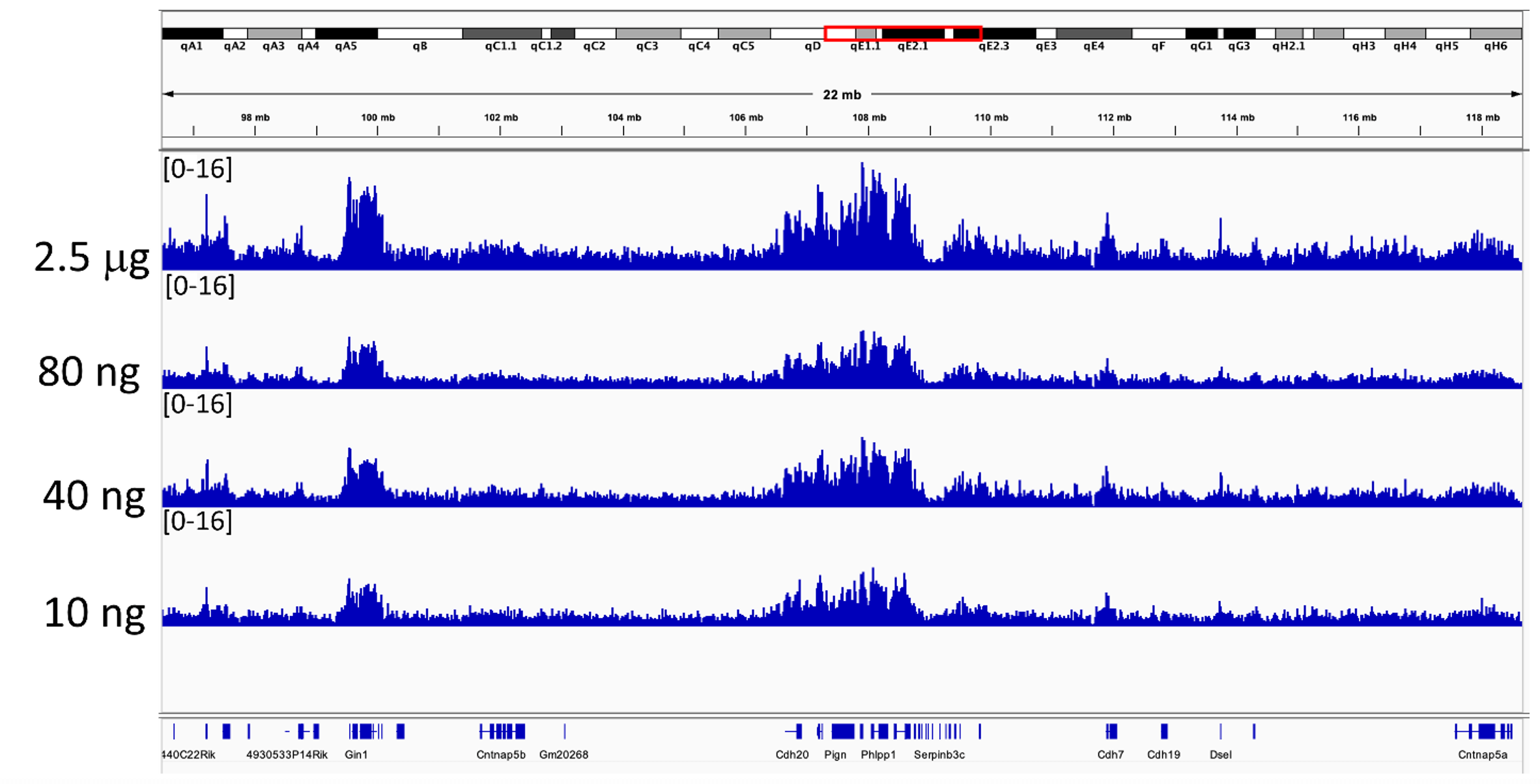5hmC Profiling Kit Overview
Win a FREE 5hmC Profiling Kit during our Summer Giveaway. Learn More
Related Products:
- RapCap Beads for cfDNA Isolation: Rapid Capture Magnetic Beads for cfDNA Isolation
Based on the patented 5hmC-Seal technology* the 5hmC Profiling Kit protocol is designed to detect and capture DNA fragments containing 5-hydroxymethylcytosine (5hmC) for analysis by real-time PCR or NGS sequencing. By utilizing a β-glucosyltransferase enzyme, a modified glucose moiety is selectively transferred to 5hmC residues in double-stranded DNA. The modified glucose is then used to chemically attach a biotin conjugate for capture and enrichment of 5hmC containing fragments with streptavidin magnetic beads. All purification steps are done with convenient SPRI beads.
The 5hmC Profiling Kit contains all the reagents required to perform the glucosylation and biotinylation reactions, streptavidin capture, elution, and purification of DNA containing 5hmC. In addition, spike-in control DNA and PCR primers are included so that efficiency and specificity of the enrichment can be verified.
* Song, C.X., et al., Nature Biotechnology. 29, 68-72 (2011).
Patent US 8,741,567 B2.
5hmC Profiling Kit Highlights
- Highly Specific: Chemical labeling ensures selective modification of 5hmC DNA without cross reactivity with 5mC
- Low Background and high sensitivity: Biotin-streptavidin capture allows for stronger binding and more stringent washes than with hMeDIP
- QC Controls Included: Spike-in control DNA and PCR primers make it easy to verify efficiency and specificity of the 5hmC enrichment.
- Simple and Fast: Can be completed in less than 5 hours
5hmC Profiling Kit Contents
The 5hmC Profiling Kit is shipped on dry ice and contains reagents with multiple storage temperatures inside. Please store each component at the temperature indicated below. All reagents are guaranteed stable for 6 months from date of receipt when stored properly. Do not refreeze the streptavidin or SPRI beads. Once thawed, store at their proper temperature. This kit includes the following components:
| Reagents | Quantity | Storage |
|---|---|---|
| Beta-glucosyltransferase | 55 µl | -20°C |
| UDP-Azide-Glucose | 65 µl | -20°C |
| 10X Reaction Buffer | 140 µl | -20°C |
| Biotin Conjugate Solution | 500 µl | -20°C |
| Spike-in DNA (10 ng/µl) | 55 µl | -20°C |
| 5hmC Spike-in Primer | 160 µl | -20°C |
| 5mC Spike-in Primer | 160 µl | -20°C |
| Streptavidin Beads | 620 µl | 4°C |
| Binding Buffer AM13 | 28 mL | 4°C |
| 10X Elution Buffer AM2 | 140 µl | 4°C |
| SPRI Beads | 4.5 mL | 4°C |
| TT Buffer | 3.6 mL | RT |
| 10 mM Tris-HCl, pH 8 | 11 mL | RT |
5hmC Profiling Kit Data
Figure 1: Specificity of 5hmC Profiling Kit for enrichment of 5hmC DNA.
310 ng of sonicated mouse brain genomic DNA was spiked with 31 pg (1:10,000) of positive control Spike-in DNA and processed using the 5hmC Profiling Kit protocol in triplicate. Eluted and purified DNA was tested using real time PCR with three human specific primer sets (Agap1, Necap1, and Ppm1h) and the included 5hmC and 5mC Spike-in Primer sets. The % Input was calculated to determine the efficiency and selectivity of the enrichment reactions. The Agap1, Necap1, and Ppm1h primer sets target regions inside these respective genes known to contain 5hmC. The Spike-in DNA (10 ng/µl) contains an equimolar mixture of two different dsDNA fragments which contain either 5-methylcytosines or 5-hydroxymethylcytosines. The 5mC and 5hmC Spike-in primer sets target these 5mC or the 5hmC dsDNA fragments respectively. Post-assay enrichment efficiency before proceeding to library preparation and sequencing can be determined with qPCR performed on these spike-in targets. The negative control reaction corresponds to a region that does not contain hydroxymethylcytosine.
Figure 2: Input titration shows good correlation of peaks down to 10 ng of input gDNA.
PIXUL-sonicated mouse brain gDNA was processed using the 5hmC Profiling Kit protocol with input amounts at 2.5 µg, 80 ng, 40 ng or 10 ng. Libraries were created from fragments and sequenced to localize 5hmC in each sample. A representative 22 Mb selection of chromosome 1 shows good correlation between all input masses.
Figure 3: Sequencing data shows good correlation with published datasets.
2.5 µG PIXUL-sonicated mouse brain gDNA was processed using the 5hmC Profiling Kit protocol. Library prep was conducted and libraries sequenced. The public hMe-Seal dataset used is from Song et al., Nature Biotech, 2011.
5hmC Profiling Kit Data Documents
You might also be interested in:
| Name | Format | Cat No. | Price | |
|---|---|---|---|---|
| 5hmC Profiling Kit | 24 rxns | 55023 | ¥7,930 | Add to Cart |
| UDP-Azide-Glucose | 1 vial | 55020 | ¥4,230 | Add to Cart |






